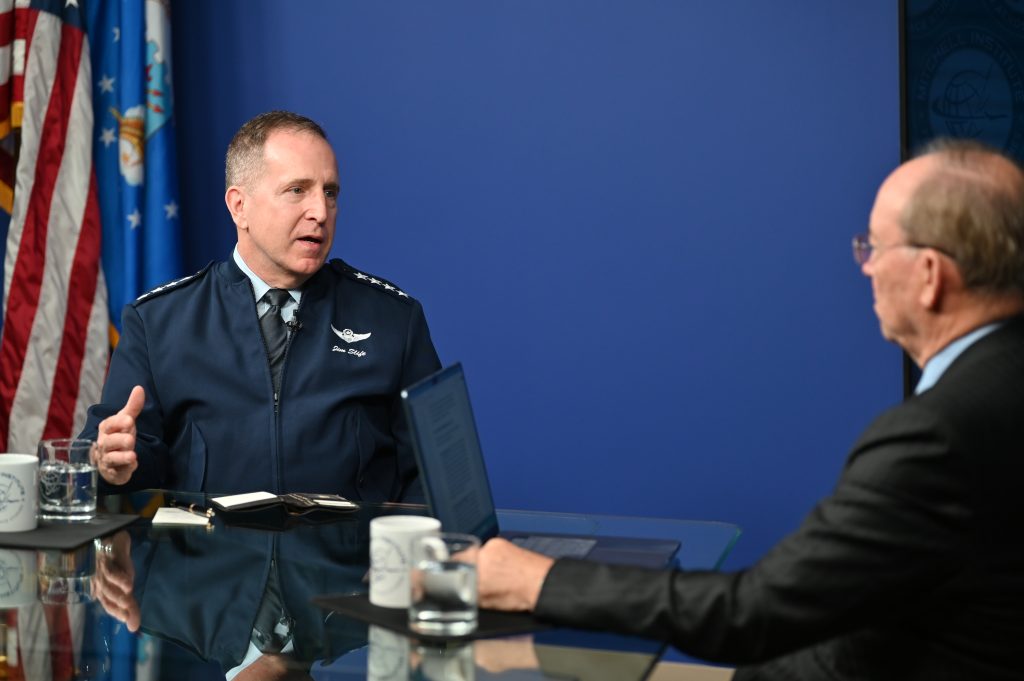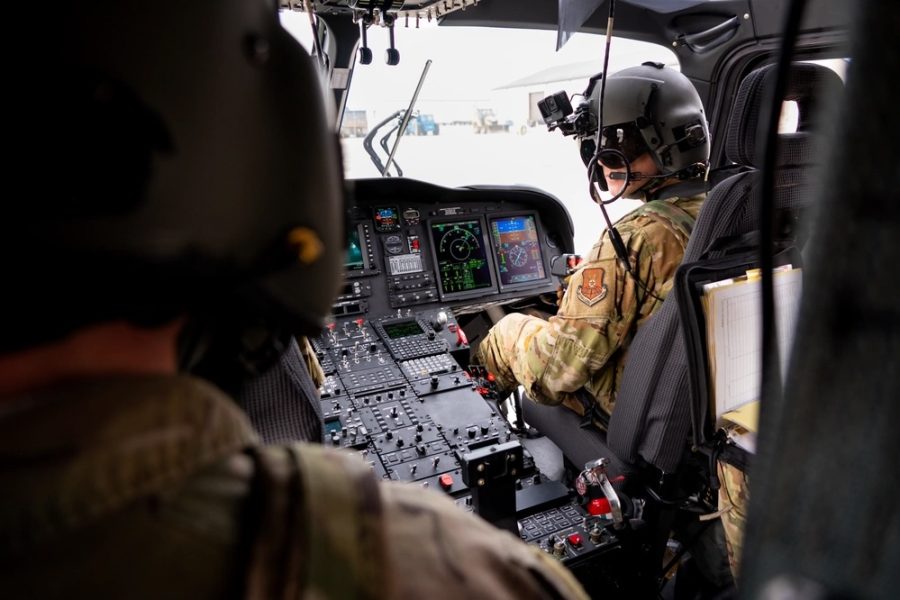Recent changes to the training pipeline for helicopter, tanker, transport, and other pilots are helping the Air Force close the gap on a persistent pilot shortage, the service’s number two said.
“We are making gains, but boy it is complicated,” Gen. James C. Slife said July 29 in an event hosted by the Mitchell Institute for Aerospace Studies.
Amid aircraft maintenance issues, delays in new trainer procurement, and fierce competition with commercial airlines, the Air Force is short about 2,000 pilots, leaving too few to fill both its cockpits and staff slots. The roots of the shortage trace back to end of the Cold War, when the U.S. closed many of its air bases in pursuit of efficiency, Slife said.
“There is a plant capacity to our pilot training enterprise,” he explained. “When you build a very efficient system, you oftentimes lose the ability to deal with turbulence in the environment.”
The general pointed to a severe thunderstorm at Vance Air Force Base, Okla. last year that grounded nearly all of the T-6 trainer aircraft there. The instructor pilots and maintainers made a full recovery and even got ahead of schedule within a month, but it took a herculean effort. Even before the thunderstorm, hundreds of future pilots were stuck working for public affairs or other odd jobs while waiting for cockpit seats to open up.
“You don’t have any slack in the system,” Slife said. “So the Air Force has under-produced by about 200 pilots a year for 10 years and lo and behold … you end up about 2,000 pilots short.”

Fixing that shortage won’t happen overnight, Slife said. Instead, incremental improvements will be required over time. But he is seeing progress in areas such as helicopter pilot training.
From 1993 to 2020, Air Force helicopter pilot hopefuls flew the T-6 fixed-wing aircraft for six months before moving to Fort Novosel, Ala. for rotary wing training. But starting in 2020, students went straight to Novosel as part of the Helicopter Training Next program, opening up “well over 100 seats a year for people that are going to fixed-wing pilot operations,” Slife said.
Meanwhile, Air Education and Training Command (AETC), which oversees pilot training, is sending some pilots straight from T-6 training into formal training units where they learn to fly tankers, transports, some intelligence, surveillance, and reconnaissance [ISR] aircraft and some special operations platforms.
Usually, pilots hoping to fly those airframes fly the T-1 training jet before moving on to their specific platform, but the aging T-1 fleet is due to retire in fiscal year 2026, and its replacement, the T-7 Red Hawk, is years behind schedule.
“Do we really think they’re good enough to go straight to an FTU?” Slife asked about pilots skipping the T-1. “AETC has recently done small group tryouts and determined that there’s really no statistical difference” between those who skip the T-1 and those who do not.
“So AETC is really at the cutting edge of making our pilot training as effective as possible, given the plant capacity that we have available to train pilots in,” the general added.
The command is also looking to remove “bottlenecks” from the pipeline, such as T-6 availability, Slife said. The next step is to apply that same thinking to the T-38 training jet used to prepare fighter and bomber crews for their airframes. Slife did not share specifics, but he hinted that when the T-7—with its glass cockpit, modular systems architecture, and maintainer-friendly design—eventually arrives, it “is going to allow us to fundamentally shift our pilot training model.”
